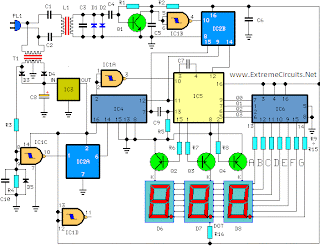The BlackBerry VM-605 features a loud speaker for clear calls. Built-in FM transmission allows drivers to make use of their vehicle’s stereo for calls and music. The most interesting features in the
VM-605 is that it was designed to work with GPS applications like TeleNav that announce your directions over the speakerphone. BlackBerry has included a button lock function. Holding the FM, Volume Up, and Front Panel buttons for four seconds will power off the unit and lock the keys, preventing accidental calls. Repeat the process to awaken the unit.
More Specifications
Blackberry VM-605 :
* Music and calls through your car stereo speakers: Play calls and music from your cell phone on your car stereo via FM and Bluetooth transmission. FM Transmission with Auto Station Scanning for a surround sound effect.
* Multiple Languages: Easy to operate because the VM-605 gives spoken information in 9 languages. Blackberry VM-605 also speaks the CALLER ID so you control who to answer!
* Echo and Noise Cancellation: Background noise reduction and echo cancellation makes calls clear.
* GPS Application: VM-605 Speakerphone is designed to work with GPS applications like TeleNav that annouce your directions over the speakerphone or car stereo. * Compatible with select third-party GPS mapping applications. Check with your service provider for supported features and services.
* Battery: Talk continuously for up to 13 hours OR standby for up to 240 hours before you need to recharge the internal 1100mAh Lithim Polymer battery. Automatic Time-Out shutdown feature also saves battery life. Recharge from the included Micro USB auto charger or any other AC or DC Micro USB Charger.
* Lightweight and compact: Blackberry VM-605 weighs 86 grams (3.03 oz.), and measures only 123 mm x 57.6 mm x 16 mm (4.84 inches x 2.27 inches x 0.63 inches).
* Automatic reconnect: Auto-pairing for no-nonsense start up with your cell phone.
* Basic call handling: Features Answer/end calls, Reject calls, Voice-dialing through your cell phone, Last number redialing, and Mute.
* Bluetooth A2DP, HF and HSP profiles are all supported on this Bluetooth version 2.0, class 2 device for better connectivity up to 30 feet away
* Click here to determine if your cell phone model is Bluetooth enabled, AND which Bluetooth profiles it can support.
* RIM Blackberry factory original one year warranty applies.
* Price range: $59.99 – $74.99
 This DC power supply circuit is adjustable using IC Voltage Regulator LM317. LM317 is a versatile and highly efficient 1.2-37V voltage regulatorthat can provide up to 1.5A of current with a large heat sink. It'sideal for just about any application. This was my first workbench powersupply and I still use it.
This DC power supply circuit is adjustable using IC Voltage Regulator LM317. LM317 is a versatile and highly efficient 1.2-37V voltage regulatorthat can provide up to 1.5A of current with a large heat sink. It'sideal for just about any application. This was my first workbench powersupply and I still use it.








































